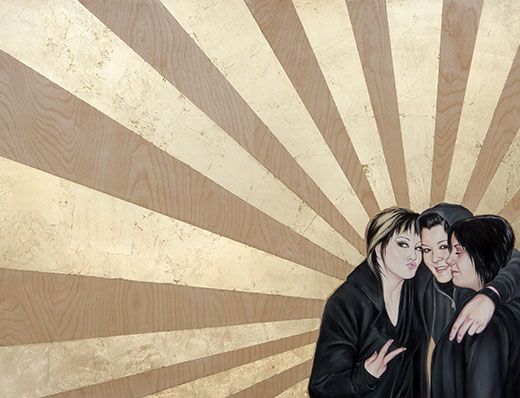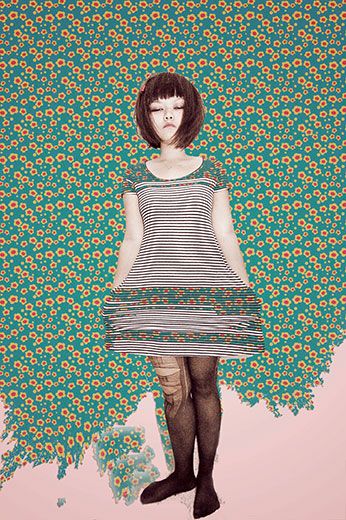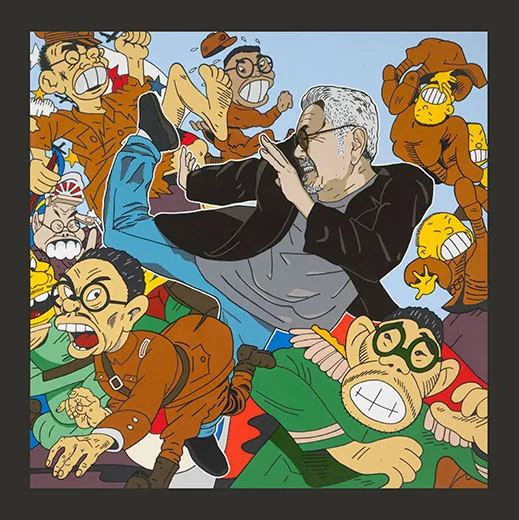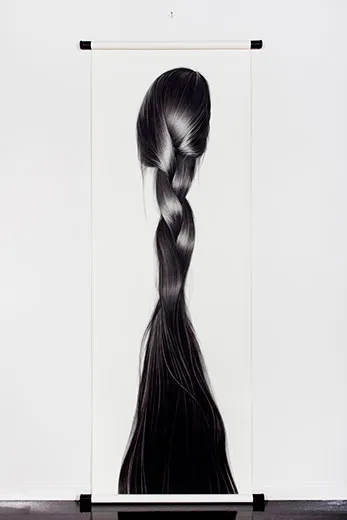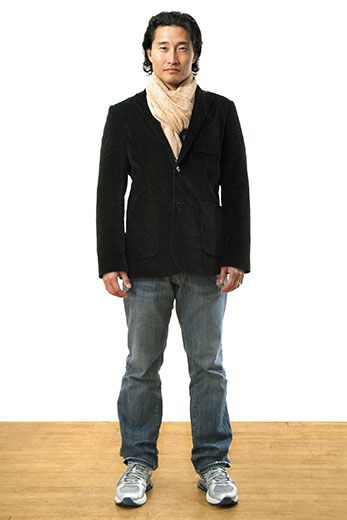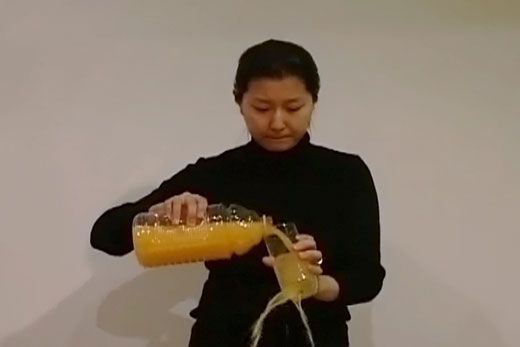Encountering the Asian American Experience at Portrait Gallery
Konrad Ng, director of the Smithsonian Asian Pacific American Program, shares his insights on “Portraiture Now: Asian American Portraits of Encounter”
/https://tf-cmsv2-smithsonianmag-media.s3.amazonaws.com/filer/20110812024004Saldamando_Crew_small.jpg)
“Portraiture Now: Asian American Portraits of Encounter“ seeks to explore what it means to be Asian in America through the works of CYJO, Hye Yeon Nam, Shizu Saldamando, Roger Shimomura, Satomi Shirai, Tam Tran and Zhang Chun Hong. The exhibit, a collaboration of the National Portrait Gallery (NPG) and the Smithsonian Asian Pacific American Program (APAP), opened today, August 12, at the Portrait Gallery. Konrad Ng, director of the Smithsonian Asian Pacific American Program, shared his insights on the show via e-mail.
What can the works in the show tell us about being Asian in America?
I think the works start conversations about what it means to be Asian in America rather than offer a definitive interpretation. Indeed, the show offers a cacophony of ways of being-in-the-world. If there is a common theme that unites the experience, I would say how they treat identity as a complex negotiation as opposed to a being given, that “I am definitively X.” The negotiation comes from how one can be rooted in a community, but not limited by it.
Is there a personal reason that you chose to explore the Asian American experience?
I appreciate good art and the show contains terrific work. The Portrait Gallery and my program the Smithsonian Asian Pacific American Program see the “Asian American experience” as a vehicle for showing how portraiture is a language and a story. These artists use the form to express their experience and by doing so, start conversations about what it means to be American, the dynamics of world cultures, and their intersection.
What is a “Portrait of Encounter”?
For me, a portrait of encounter conveys the forces at work in telling the story of identity, that is, how we work on finding balance during our negotiation of things like: what to wear, perceptions and self-perceptions, our sense of home, culture, or the expectations of heritage and gender.
The show contains a wide range of media and unique interpretations of portraiture. Which pieces are your favorites and what about them stand out to you?
It’s hard to pick one. As a scholar of cinema and digital media, I’m immediately drawn to Hye Yeon Nam’s work. I love the edginess of Saldamando’s works. CYJO’s photographs are engrossing. I love the messiness of Satomi Shirai’s photographs. The way that Tam Tran ties a sense of elasticity with her identity is great. The textures of Zhang Chun Hong’s work surprised me with its aggressiveness. Roger Shimomura finds a a productive balance between anger and playfulness.
The artists featured in the exhibit come from different Asian backgrounds as well as different geographic areas of the U.S. How important was representing the unique Asian cultures when putting together the show? How important was representing the unique U.S. regions?
The artists were selected from a general call for submissions. Together, the NPG and the APAP created a shortlist based on the caliber of work and how the work would fit in the larger experience of the exhibition. During the process, I wanted us to curate a set of encounters such that the journey for the viewer would be a transformation in their understanding of Asian America; not to arrive at a conclusion, but to start a conversation about that that means. I think we were able to do that.
“Portraiture Now: Asian American Portraits of Encounter” is open now through October 14, 2012 at the National Portrait Gallery.
View a gallery of the photos below.
